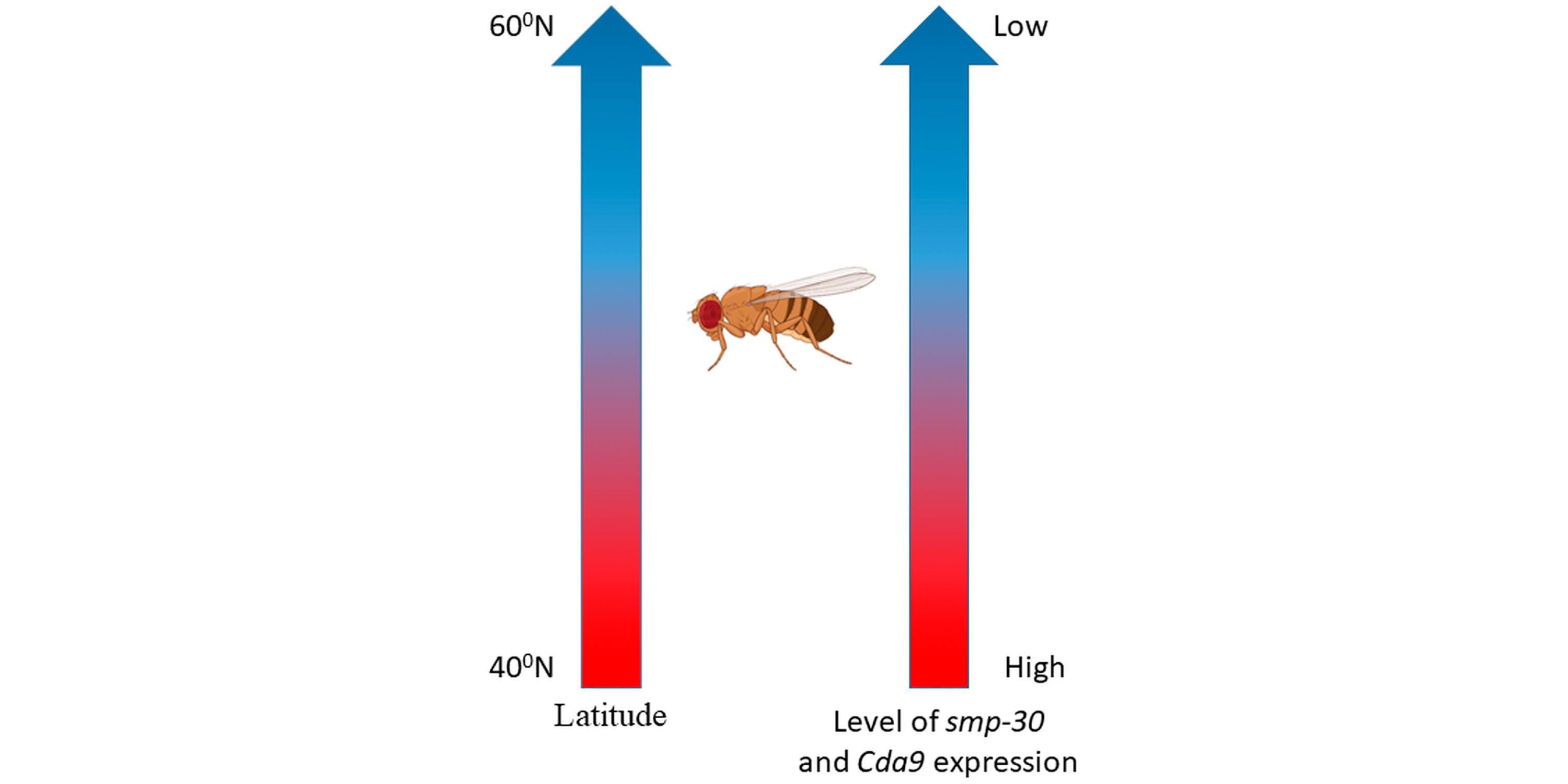Will a Comfortable Environment Make Us Identical?
Publications, 29 June 2020
A team of authors from the Sector of Molecular Genetics of Cell of the Dzhelepov Laboratory of Nuclear Problems conducted a study in the frames of the theme 04-2-1132-2017/2022 “Biomedical and Radiation-Genetic Studies Using Different Types of Ionizing Radiation”. The results of this study were published in the Ecology and Evolution (Q1) journal. Find the review of the scientific work below.
Can the years spent in ideal conditions eliminate natural selection that affected living organisms for millions of years? It is believed that Homo sapiens is there for about 1,600—1,800 generations. And with a 25-year-long human generation, it would take hundreds and thousands of years to answer this question. However, using model organisms with a short life cycle but with the life and adaptation processes common for different organisms can give some answers.
Drosophila melanogaster, a fruit fly, is widely used as a model object for studying the way living organisms adapt to environmental changes and inherit certain traits.
In the article “Transcriptome Analysis of Drosophila Melanogaster Laboratory Strains of Different Geographical Origin after Long-Term Laboratory Maintenance” by Mikhail Zarubin, Alena Yakhnenko and Elena Kravchenko published in the Ecology and Evolution (Q1), the findings of the study of several Drosophila melanogaster strains are presented. This analysis is an indispensable preliminary stage for using these strains in further radiobiological experiments.
The authors showed that at the level of transcriptomes (RNA set of all currently active genes of an organism) and several physiological traits, phenotypic features of the fruit flies from Domodedovo (Moscow region) and those from Canton (Ohio, the USA) remain constant even after almost 60 and 100 years of living in the same laboratory conditions (about 6,000 and 10,000 generations of D. melanogaster, respectively). Both laboratory lines kept a considerable number of adaptive traits evolved earlier in natural surroundings due to natural selection. For instance, the American drosophilae run faster, and the Russian ones are more active at low ambient temperatures. The transcriptome analysis indicated a difference between the American and Russian lines in the expression of many genes, in particular, of those responsible for insecticide protection (these toxic substances were not used 100 years ago, that is why these genes are less active in the American strain), involved in locomotion and mitochondria activity (more active in the American strain), responsible for the sense of smell (more active in the American strain) and for fat and carbohydrate metabolism (different genes work in the American and Russian strains) etc. The genes with different expression in the studied lab strains considerably correlated with the genes with different expression in the fruit flies from natural populations of the corresponding latitudes. Thus, even 10,000 generations in the ideal environment are not enough to extinguish millions of years of evolution that developed adaptive alterations between organisms of different geographical origin.
Furthermore, this finding can also solve another serious problem — mass insect extinction throughout the last decade caused by global warming. Determining the genes which ensure the adaptation to the warm latitudes nearer the equator will allow estimating survival prospects for many insect species and maybe preventing their death. According to the authors, the analysis of the well-studied lab strains keeping their adaptive traits makes it possible to distinguish these genes. Particularly, based on the transcriptome analysis of the Russian and American Drosophila melanogaster lab strains, the authors have found two candidate genes related to latitude adaptation and demonstrated a correlation between the expression of the genes and the latitude while studying five Drosophila melanogaster lines of different geographical origin (from 400 to 600 N).
In their further research, the scientists intend to identify and examine different regulatory elements which cause the alteration in gene expression of the Russian and American Drosophila melanogaster lab strains, and also evaluate their radioresistance.
https://onlinelibrary.wiley.com/doi/epdf/10.1002/ece3.6410
Candidate of Biological Sciences, Head of the Sector
of Molecular Genetics of Cell
Elena V. Kravchenko
